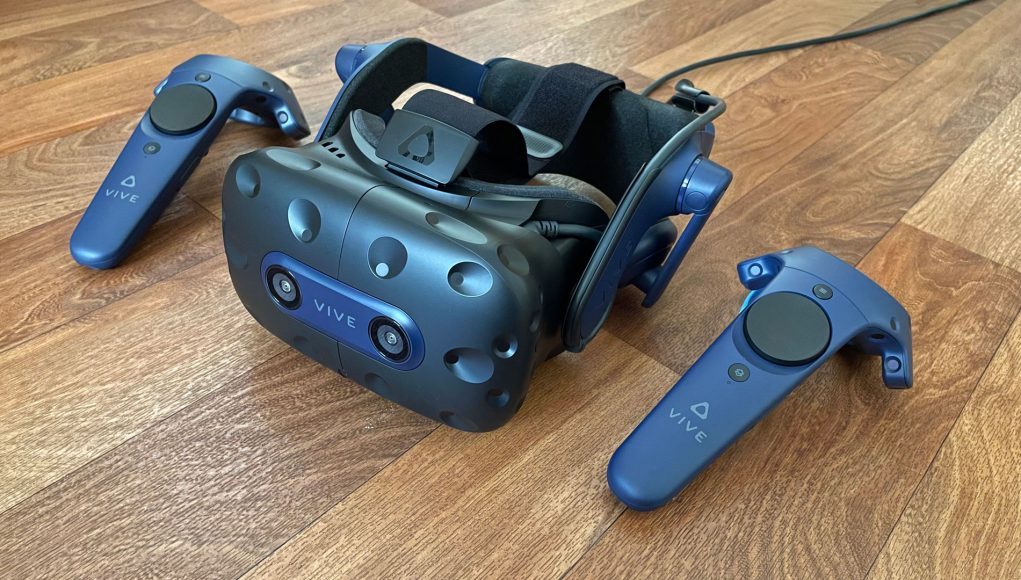Pass-through, Microphone, and Audio
Unfortunately a few other features also come up short on “Pro” status. For one, the pass-through cameras are what we in the biz like to call ‘hot garbage’. While pretty much all PC VR headsets are behind-the-times on pass-through compared to what Oculus has done, Vive Pro 2 must have stuck with the same cameras on the original Vive Pro because they are truly far from anything you’d call “Pro.” Not only is the image a noisy, low resolution mess, but it also takes a few seconds to initialize on the first use of each session. Like other PC VR headsets, most people will probably forget that passthrough exists on Vive Pro 2.
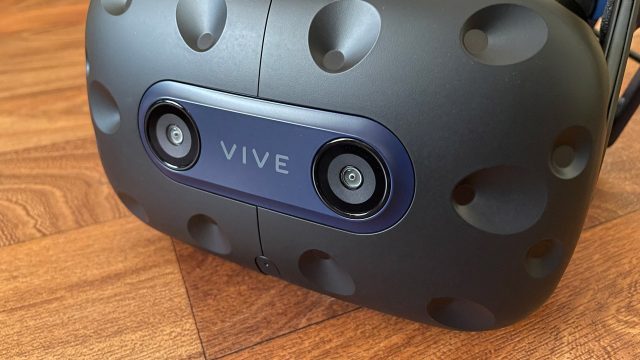
Next up in the decidedly not “Pro” department is the Vive Pro 2 microphone. The quality sounds akin to someone talking through their phone over Zoom, and is clearly behind its contemporaries in quality. In addition to the low quality, the placement of the microphone directly in front of your mouth makes for lots of ‘popping’ on plosive sounds like ‘P’ words and ‘T’ words. Vive Pro 2 microphone sample: Audio Player
Valve Index microphone sample: Audio Player Reverb G2 microphone sample: Audio Player And now onto the headphones. This one might be fairly classified as a nitpick, but it definitely stood out to me while using the headset. Vive Pro 2’s headphones actually sound very good—I have no complaints about the quality, but I do prefer the off-ear style that’s been popularized by Index, rather than the on-ear approach of Vive Pro 2.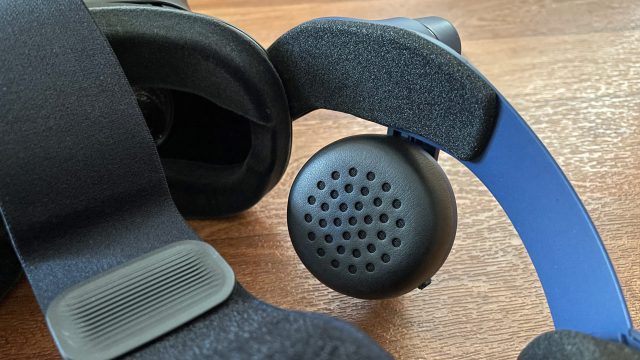
On Vive Pro 2, if you don’t remember to flip both headphones outward every time you put on the headset, they end up feeling quite in the way as they push over your ears. Beyond that, there’s something a bit more immersive about hearing the audio from your virtual reality experience without feeling anything touching your ears. Ultimately some people may prefer on-ear headphones because they block out more external noise. If you’re determined to find a better audio solution for Vive Pro 2, you can technically remove the headphones in favor of your own, but the bulky headstrap is going to make it difficult to use anything but earbuds.
Tracking & Controllers
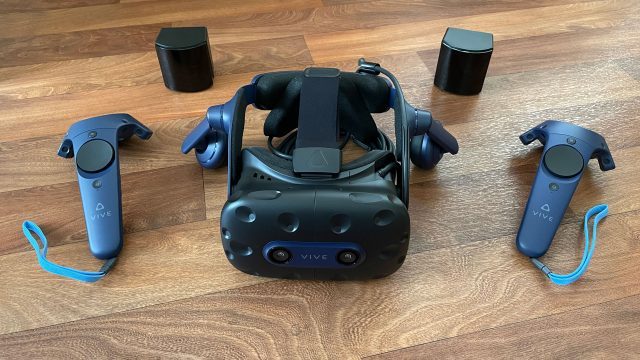
Vive Pro 2 uses the same SteamVR Tracking tech as the original Vive, Vive Pro, Valve Index, and others. While that means you’ll need to deal with external beacons (which can be set up on tripods, wall-mounted, or stuck up high on a shelf), SteamVR Tracking is the gold standard in terms of accuracy, latency, and coverage. Thus, tracking on Vive Pro 2 feels as great as you’d expect from other headsets with SteamVR Tracking. A headset with SteamVR Tracking also means you’re in the SteamVR Tracking ecosystem, which means you can mix and match other devices with SteamVR Tracking in the same playspace. For instance, while HTC will happily sell you its classic Vive wand controllers, you could easily choose to pair the headset with Valve Index controllers instead. Hell, you can even use one wand and one Index controller.
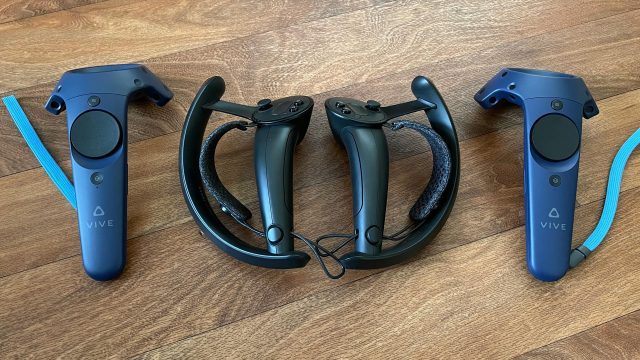
In fact that’s exactly what I did, and if you’re planning to game with Vive Pro 2, that’s what I’d recommend you do as well. As solidly built as the Vive wands are, they’re the exact same design as the original Vive wands introduced in 2016. If you’re unfamiliar, the primary inputs on the Vive wand controllers are a single large trackpad, a trigger, and a grip button. Over the years, however, pretty much every other VR controller has converged toward thumbsticks & face buttons, a trigger, and an easy to depress grab trigger—HTC itself has moved to that now-standard input set on the controllers of its other headset like Vive Cosmos and Vive Focus 3.
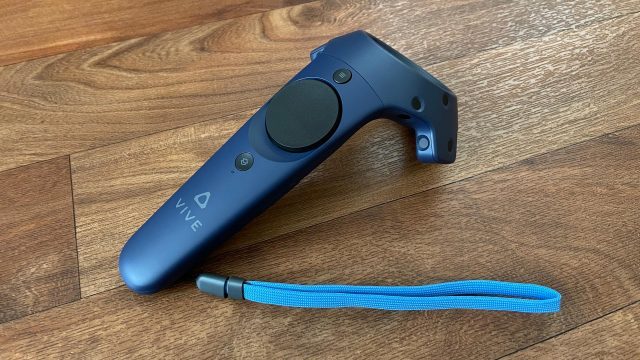
Along with being getting your choice of controllers, Vive Pro 2’s use of SteamVR Tracking also opens up the door to using tracking pucks which aren’t widely support but can enable some cool enthusiast capabilities like tracking objects or even full body tracking.
Fit & Ergonomics
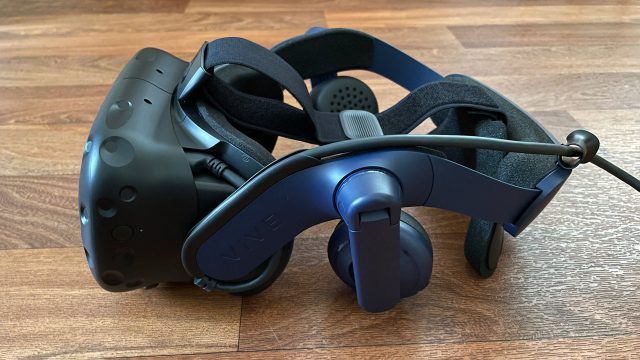
Outside of its display system, Vive Pro 2 is nearly identical in design as the original Vive Pro, and the ergonomics are no different. I find the headset reasonably comfortable and there’s a good set of ergonomic adjustments. Vive Pro 2 has both a physical IPD adjustment which ranges from 57–72mm and an eye-relief adjustment which lets you move the lenses closer or further from your face. Both help the headset adapt to a wider range of users, including those with glasses. Because of the tight sweet spot, the IPD adjustment is really important to getting a decent looking image through Vive Pro 2, so make sure you have an accurate measurement of your personal IPD. But, like the headset’s controllers, Vive Pro 2 is missing a few modern ergonomic touches that are becoming more common in other headsets. While the headset has a ratcheting dial on the back to tighten the straps to taste, it lacks spring-loaded arms which make a headset easier to put on and take off without adjusting the dial every time. That means that most of the time that you go to put on the headset you’ll need to remember to loosen the dial (and don’t forget to flip out those headphones while you’re at it).
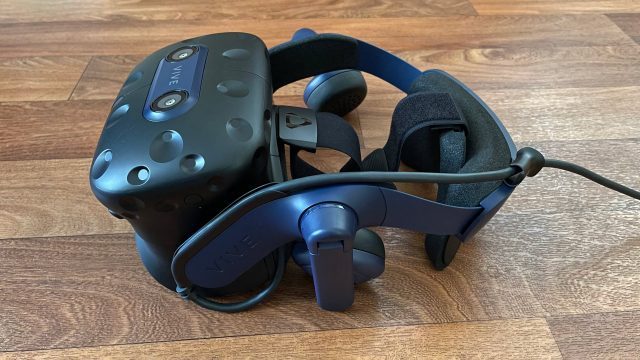
Further, while the display housing can rotate backward (like lifting flip-up sunglasses) with plenty of range, it can barely rotate forward (beyond being parallel with the ground) before stopping. This makes the headset a little bit less flexible than it would otherwise be to adapting to different head shapes and different means of fitting the headset.
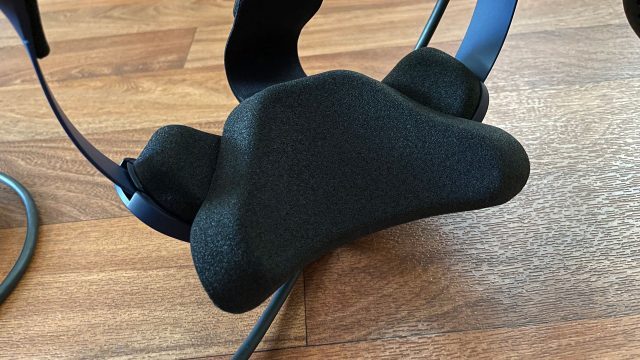
Otherwise the fit of Vive Pro 2 feels fairly comfortable. My only other minor gripe with the fit is that the rear strap that cradles your head doesn’t have as much surface contact as other headsets, and this seems to make the headset a little bit more prone to wobbling during fast head movements.

